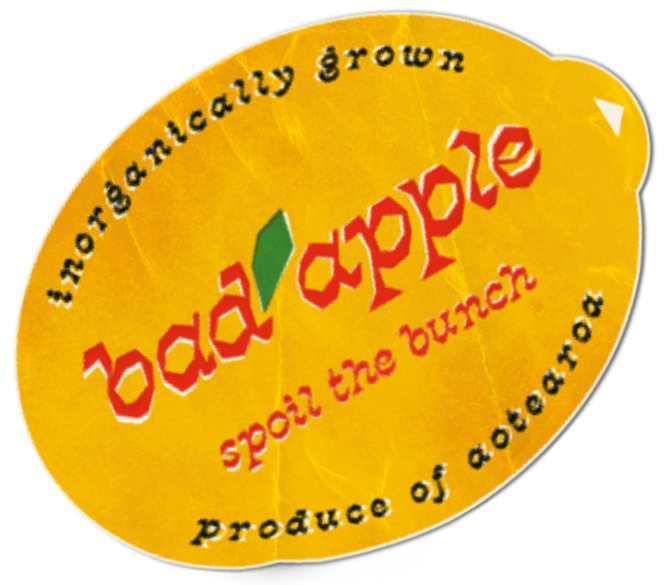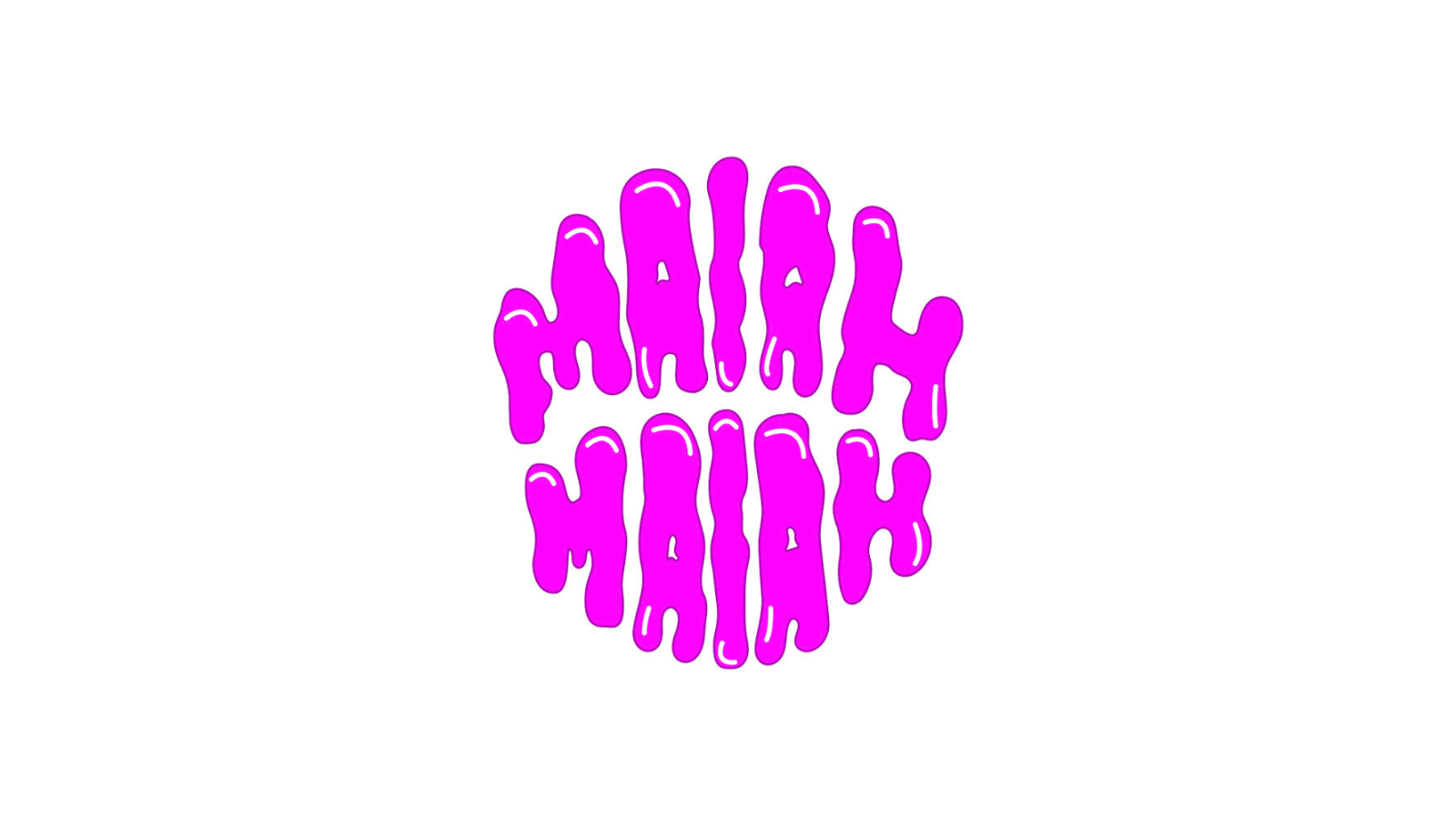As part of our Auckland Pride 2024 offerings, bad apple is publishing a series of profiles on local queer business owners with the goal of introducing our audience to new faces, and places, to shop with. We hope this project will continue into a permanent fixture of the website. If you are a queer business owner in Aotearoa, or would like to recommend one, please email damien@badapple.gay.
In our second interview for the series, Sarah Kreig (SK) speaks with Maiah Cossill (MC).
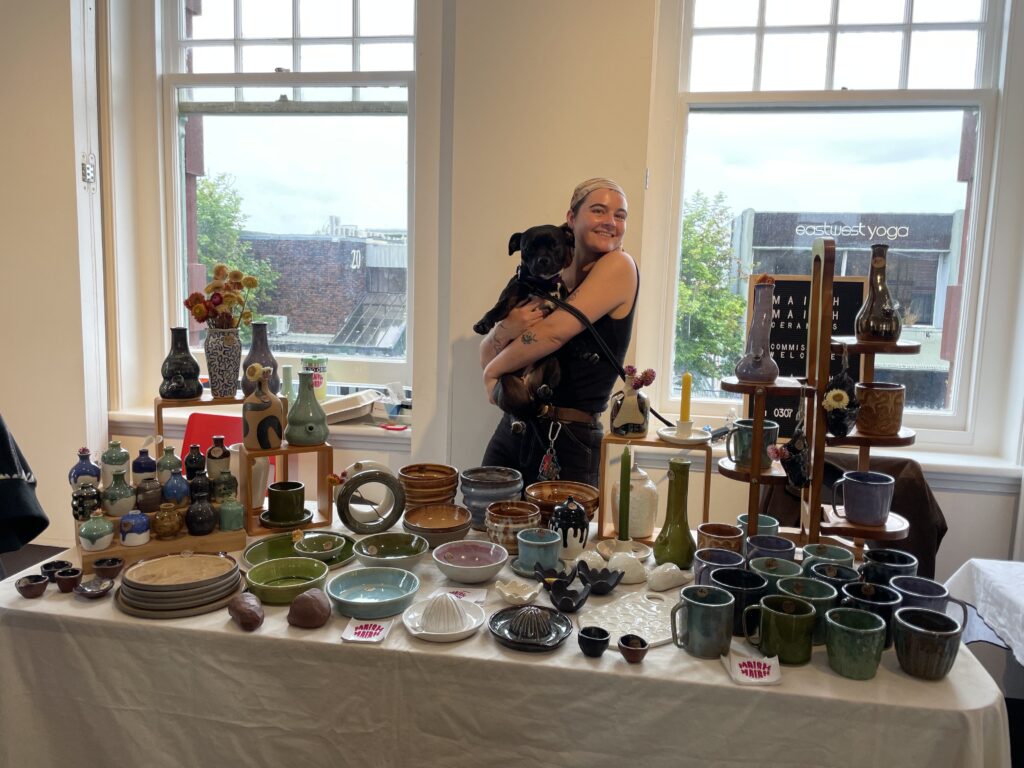
Maiah Cossil (she/they), of Maiah Maiah, has gone all-in with ceramics. I can tell she grew up in the North, from the no-nonsense way she talks about her work—as if making such beautiful pottery was all she was ever meant to do. Her dog, Chicken, is restless under the table and we aren’t sure where to start. So I check if her name is actually Maiah.
SK: Were you named after someone?
MC: No, I was actually Isla for a few weeks and then all of a sudden it was Maiah and I don’t know where it came from. They didn’t know where it came from. They have too many children to remember. It annoys me that it’s not a Māori name either, because it has the h on the end.
SK: Did you grow up in Auckland?
MC: No, I’m from up North. I’m from around Dargaville. There’s a little village called Te Kōpuru. It has a population of 400 or so. That’s where I grew up until I moved to Auckland for university. Really cute little community—super impoverished. My primary school was decile one, but I couldn’t have asked for a better upbringing. Living rurally was, you know, ‘just come home before the sun sets,’ kind of thing, which was really nice. Walked to school. The dog used to visit us at school. It was very, very rural.
SK: Can I ask where you whakapapa to?
MC: My iwi is Ngāti Māhanga. Some would call it a hapū of Tainui, but my whānau has always recognised it as its own iwi. A lot of iwi from the Waikato region sometimes fall under the Tainui category because we all came on the waka Tainui. But my whole whānau has lived up in Dargaville forever, pretty much.
SK: Do you know the story of what took them up there?
MC: They were loggers. Most of my whānau were loggers. But they married wāhine Māori from Ngāti Māhanga, brought their wives back up to Dargaville and they’ve been there since. My dad’s still a logger. It’s kind of hung around for a really long time. Someone on that side of the whānau has actually done a multi-generational whānau tree that is absolutely huge to look at. It’s really, really cool. That side of my family likes knowing where everyone is, where everyone’s gone, their children, their children’s children, and all that kind of stuff. I find that with my mum’s side, because they’re a hundred percent European, they only know like a generation back. Behind that, it’s really foggy and cloudy. It’s really interesting to have completely lost that entire identity. I think they’re Irish or something. Which is very different than my dad’s side. They all know everything and it’s great. Never going to accidentally marry your cousin.
SK: How was it coming out to your family?
MC: It was okay at the start, I think. I think there was, from my extended family, like my aunts and uncles, that it was chill. It was like no wukkas. And with my parents at the time, I think it was okay. It’s more so now that it’s all fine and dandy that you still hear a lot of derogatory comments about other people and you think “That’s still my people.” And they’re like, “Oh no, but it’s not you.” And it’s like, ‘It doesn’t really matter. We’re all kind of the same.’ The older I get, the more I’m like, I love my family very much, but some of the things that people say I don’t agree with in the slightest. Just because you’re not actively directing it at me doesn’t mean that it doesn’t still affect me and upset me and feel like it’s about me.
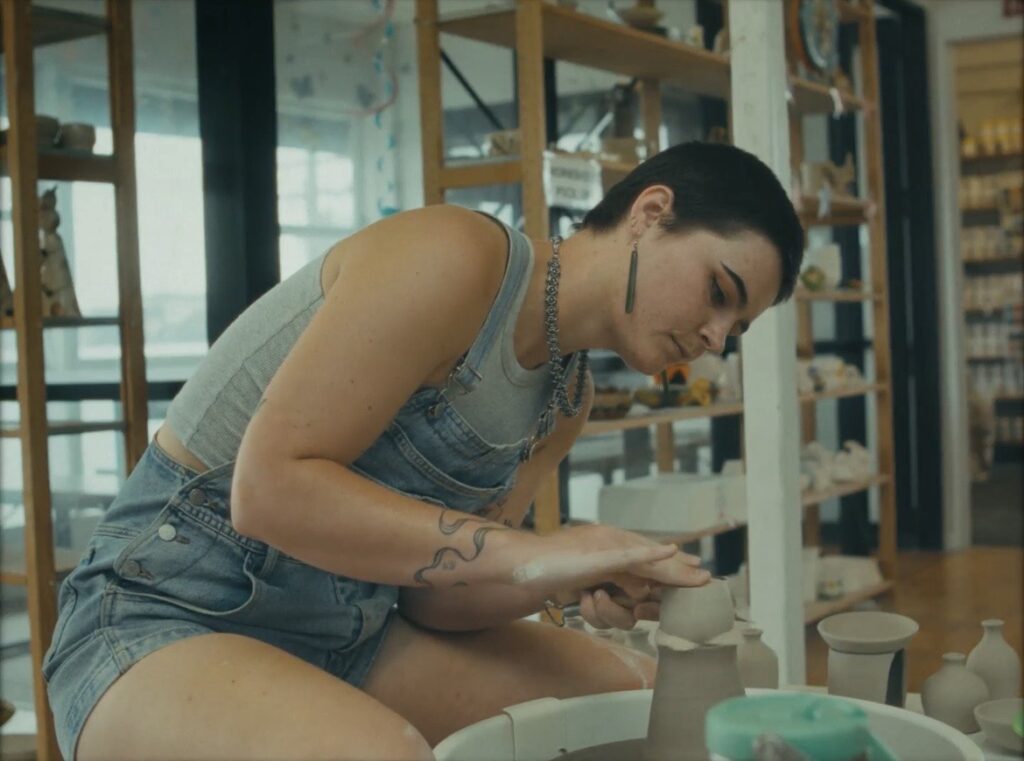
SK: When you came to uni, did you become more aware of your rural upbringing?
MC: Yeah, for sure. It was really quite shocking actually. I went to primary at Te Kōpuru up until year eight, then went to Dargaville. Even that high school only had a population of about 350—quite a small high school. And then coming to Auckland and being in a hall of 350 people. I was like, there are as many people in this hall as there was at my entire high school. This is bizarre! And having lectures in a 500-seat lecture theatre, it felt insane. And I had never felt poor. And then coming into university, I was like, ‘Oh! I am on the lower end of the people that are here right now.’ I was like, ‘Well, you guys live a completely different life than I live.’ I started off in engineering and all the boys on my floor did engineering as well. That was a wild ride of being up at one o’clock in the morning with all the boys with their shirts off studying. I bummed out of engineering because the drinking culture’s just insane. I wasn’t a drinker in high school. All the partying was too much for many people in my studies.
SK: So you left the engineering degree?
MC: I went into a physics degree. I did physics and chemistry for about a semester. Then I did chemistry and marine science for about a year, and then I ended up in earth science and marine science, and that’s a degree that I actually finished. I went on to get a job in that area for a while.
SK: What kind of work did you do?
MC: I was working for a geotechnical engineering firm. If you want to put a house or a structure on a piece of land, we come and test the strength parameters of that land to say, yes, you can dig five metres deep, or yes, you can put a house on here. Then I moved from the residential commercial side, into mining and vineyards. I was able to really try my hand at a lot of things, which was great if I wanted to stay in that field, which I didn’t.
SK: Why didn’t you want to stay in the field?
MC: When I first got the job, it was really hands-on, but as my skills progressed they said I should be a 3D modeller. I just really have no interest in spending 9–5 behind a computer screen at all. I was really good at it, but it drove me insane. They’re a really cool company and it was a great experience. I’m just not a desk jockey. I can’t do that anymore.
SK: So when did you quit?
MC: I quit four times. I went back and worked part-time for a while, and then I worked one day a week while I was doing my tutoring job for pottery for about eight months. That was enough for me to see how the pottery went. And then I was like, I can sustain myself now properly. I’m leaving for good. That was in the middle of last year. I still go and see them regularly. Great group of people, but I’m out. I’m never going back. There are instances where I could really use the money, and then I remind myself it’s not worth it. I would rather be on the bones of my butt for a few weeks than hating going to work in the morning.
SK: I can see a clear crossover between earthenware and what you originally studied. When did ceramics come into this?
MC: When I started at my job, I was a grunt. So that was full-on dirt. When they took that away from me, I was like, oh, I have no outdoor time at all. I have no me time at all. What am I going to do? My mum was a potter back in the day. I thought I might give that a crack because I love my mum. If she loved it, I’m truly going to love it. Took one term somewhere, and three weeks into it I brought my own pottery wheel. I set up the basement and then COVID hit. It just really snowballed. I just kept going. Eventually, you get enough stock to go do a market, and then another market. And then ‘Oh, there’s a job going for teaching pottery? I could do that.’ And I’ve been doing that now for a year and a half and it’s great. It just happened. I feel like it was a really natural progression.
“Because they’re ceramics and it’s from the earth anyway, once you’re done with it, it can go back to the earth. If you pulverise something down, it can go back and not harm anyone.”
SK: What would you say your business kaupapa has grown into?
MC: The stuff that I make has always really been about functionality. I want them to serve a purpose so that they never become obsolete. I think my pieces have consistently been like that. They are things that you would hold onto for a really, really long time and then you would be able to pass on to someone else or give them to an op shop and they’ll continue to serve a purpose. They have a use. They’re not just one and done. Because they’re ceramics and it’s from the earth anyway, once you’re done with it, it can go back to the earth. If you pulverise something down, it can go back and not harm anyone. I like that. I like that everything in clay is sustainable. If you make a piece and you don’t like it, I just put it back in my clay bucket and I use it again. None of my clay goes in the bin. All of the parts of clay are from the earth. Even your glaze materials are all mined and sourced. Nothing is manufactured in a synthetic sense—so I really like that. I also think it’s for everyone. I think art, and handmade goods specifically, should be accessible for everyone. That’s what I’ve tried to also continue through my brand—accessible pricing and accessible pieces within that pricing. If you’ve got $10, I’ll have something for you. If you’ve got $50, I’ll have something for you as well. If we are wanting to support small, New Zealand businesses and keep money within our community, I would like to keep that as obtainable as possible for people. I don’t think that you should be rich to have nice things.
SK: How does your artistic style compare to your mum’s?
MC: It’s so unbelievably different. Mum was predominantly a hand potter, so I don’t even know if she’s ever been on a wheel, to be honest. She handmade everything. They were all really beautiful things, but very artistic. You’re looking at a piece of art—almost nothing functional about it. They are purely artistically pleasing. Whereas mine are very much the opposite. I don’t view myself as an artist at all. I just make things that you’re going to use.
SK: Since it’s market season, what’s your experience of going to markets?
MC: Market season is a wild ride. It’s really hectic—lot more socially draining than I had expected it to be. Even a four-hour market, I am dead. I go to bed as soon as I get home. It’s so exhausting talking to people. But in a good way. I love markets and I specifically love the queer markets because that’s my gang. I love chatting to people. I love seeing everyone else’s work. Every single market I go to I buy something from someone else because I just love it. I’m friends now with some of the market stall holders which is cool because I find it really hard to make friends. I really like Annabelle and Sani. I constantly get messages from them about my dog, Chicken. They’ve always been really great supporters of me. Cam’s, great. Love seeing Cam at a market. Abigail Steel is really cool. And Gabby, who does Almond Sugary. They’re really groovy too.
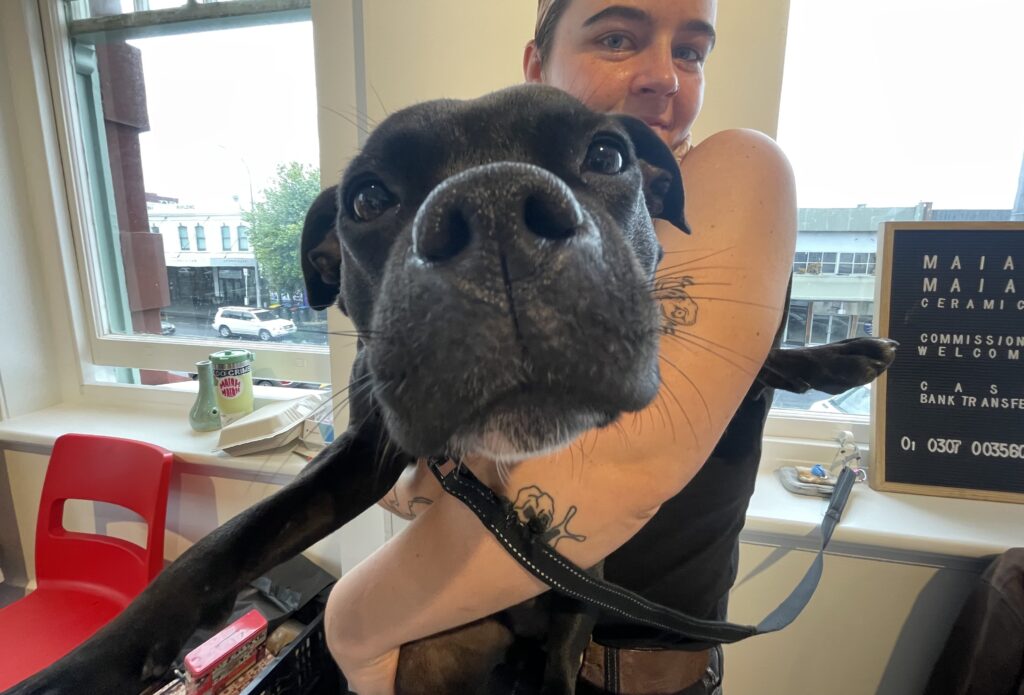
SK: You said that you find it hard to make friends. Did you find it hard to make friends growing up as well?
MC: I’ve always been a little bit weird, honestly. I was one of those weird kids.
SK: It’s called being queer.
MC: Being queer and maybe potentially undiagnosed with ADHD, there’s something going on there that I always just was just a bit odd. I think when I was younger, it was easier to make friends because as little kids it’s easy. But I had a really shit time in high school. I think a lot of queer kids did. Not that I was out at the time. There was always something different about me. And then going to uni and having my experience—that wasn’t great either. I lost a lot of people that I would’ve considered friends at the time. It’s always been kind of difficult. I still have a few ride-or-dies, but I don’t think I made a single adult friend until going to markets.
SK: Do you sell your stuff anywhere other than markets?
MC: I’m pretty useless at restocking, but I have quite a bit of stuff at Parallel Aotearoa, the bookstore, which is really funky. I was stocking at Absurd Hope in Ōrewa, but she unfortunately had to close down. She was stocking only New Zealand artists, which was really, really cool.
SK: And do you mainly make your pieces at home?
MC: I have a studio in the basement, which is lovely for me because then I don’t have to leave the house. I don’t have to pay for those types of things. I have my own kiln, which is great. I have literally everything I need.
SK: What would you say to someone who’s getting into pottery?
“Turning a hobby into a business can remove a lot of the fun out of it. If you’re just doing it for fun, go off, have a fun time, really branch out and experience different forms of doing things.”
MC: There are lots of people that want to turn it into a business straight away and I would say think really, really hard about whether you are doing it to enjoy it and whether you would still continue to enjoy it when you are banking on it to pay your bills. Turning a hobby into a business can remove a lot of the fun out of it. If you’re just doing it for fun, go off, have a fun time, really branch out and experience different forms of doing things. Because it’s such a rewarding hobby to see something in front of your eyes, just be made and turn into something. But I’ve had many discussions with people that have turned it into a business, like me, and have started to really dislike it. It muddies the waters so much.
SK: Do you feel like you have balance for yourself at the moment?
MC: Yeah, I think I’ve gotten a lot better at saying no to a lot of commissions that I don’t want to do. When I first started, I took on absolutely everything and didn’t enjoy it. So now I only take on things that I actively enjoy, and I would say 80 percent of the things that I make now I actively really, really enjoy making, which is great.
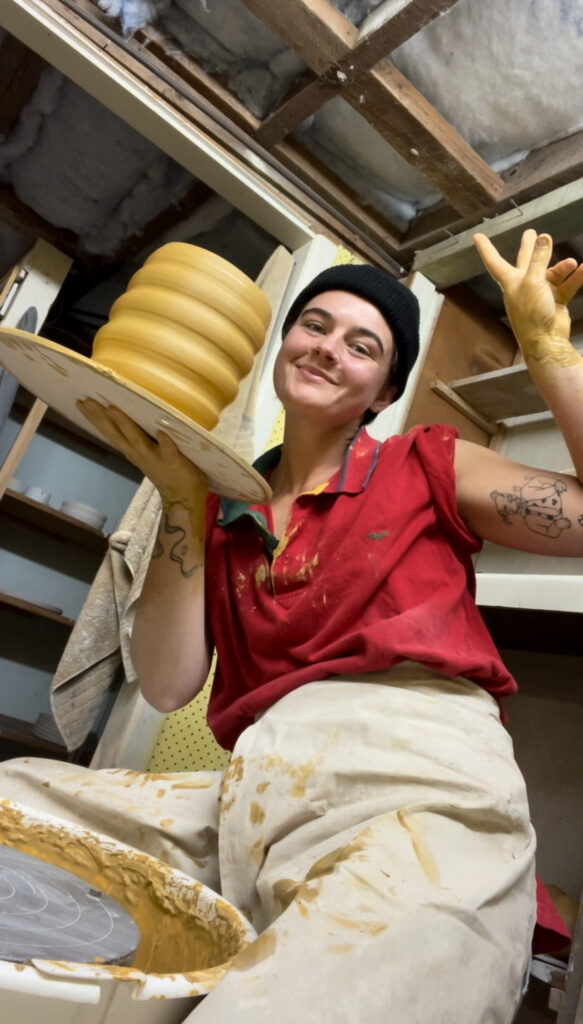
You can find (and commission!) Maiah online on Instagram and TikTok, as well as in person at several markets across Tāmaki Makaurau. If you’re lucky, you might also find some of her work in-store at Parallel Aotearoa.
Featured photos courtesy of Maiah Cossill.
